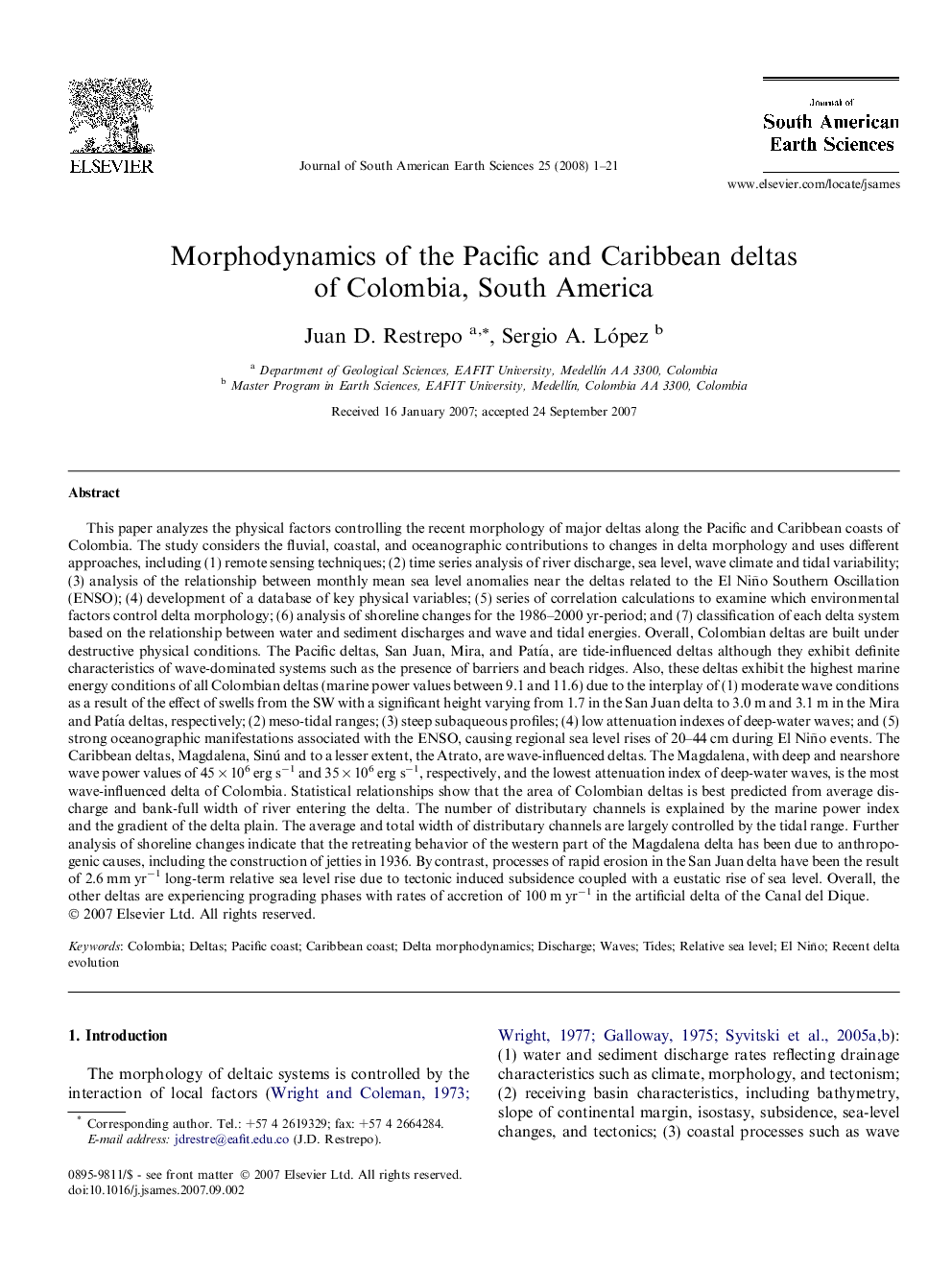| کد مقاله | کد نشریه | سال انتشار | مقاله انگلیسی | نسخه تمام متن |
|---|---|---|---|---|
| 4682975 | 1348958 | 2008 | 21 صفحه PDF | دانلود رایگان |

This paper analyzes the physical factors controlling the recent morphology of major deltas along the Pacific and Caribbean coasts of Colombia. The study considers the fluvial, coastal, and oceanographic contributions to changes in delta morphology and uses different approaches, including (1) remote sensing techniques; (2) time series analysis of river discharge, sea level, wave climate and tidal variability; (3) analysis of the relationship between monthly mean sea level anomalies near the deltas related to the El Niño Southern Oscillation (ENSO); (4) development of a database of key physical variables; (5) series of correlation calculations to examine which environmental factors control delta morphology; (6) analysis of shoreline changes for the 1986–2000 yr-period; and (7) classification of each delta system based on the relationship between water and sediment discharges and wave and tidal energies. Overall, Colombian deltas are built under destructive physical conditions. The Pacific deltas, San Juan, Mira, and Patía, are tide-influenced deltas although they exhibit definite characteristics of wave-dominated systems such as the presence of barriers and beach ridges. Also, these deltas exhibit the highest marine energy conditions of all Colombian deltas (marine power values between 9.1 and 11.6) due to the interplay of (1) moderate wave conditions as a result of the effect of swells from the SW with a significant height varying from 1.7 in the San Juan delta to 3.0 m and 3.1 m in the Mira and Patía deltas, respectively; (2) meso-tidal ranges; (3) steep subaqueous profiles; (4) low attenuation indexes of deep-water waves; and (5) strong oceanographic manifestations associated with the ENSO, causing regional sea level rises of 20–44 cm during El Niño events. The Caribbean deltas, Magdalena, Sinú and to a lesser extent, the Atrato, are wave-influenced deltas. The Magdalena, with deep and nearshore wave power values of 45 × 106 erg s−1 and 35 × 106 erg s−1, respectively, and the lowest attenuation index of deep-water waves, is the most wave-influenced delta of Colombia. Statistical relationships show that the area of Colombian deltas is best predicted from average discharge and bank-full width of river entering the delta. The number of distributary channels is explained by the marine power index and the gradient of the delta plain. The average and total width of distributary channels are largely controlled by the tidal range. Further analysis of shoreline changes indicate that the retreating behavior of the western part of the Magdalena delta has been due to anthropogenic causes, including the construction of jetties in 1936. By contrast, processes of rapid erosion in the San Juan delta have been the result of 2.6 mm yr−1 long-term relative sea level rise due to tectonic induced subsidence coupled with a eustatic rise of sea level. Overall, the other deltas are experiencing prograding phases with rates of accretion of 100 m yr−1 in the artificial delta of the Canal del Dique.
Journal: Journal of South American Earth Sciences - Volume 25, Issue 1, February 2008, Pages 1–21